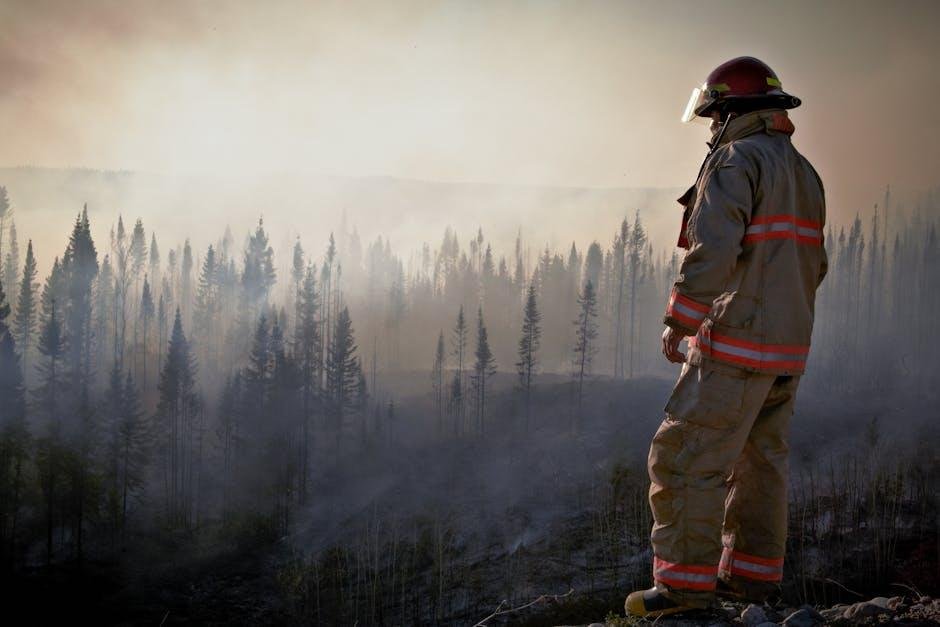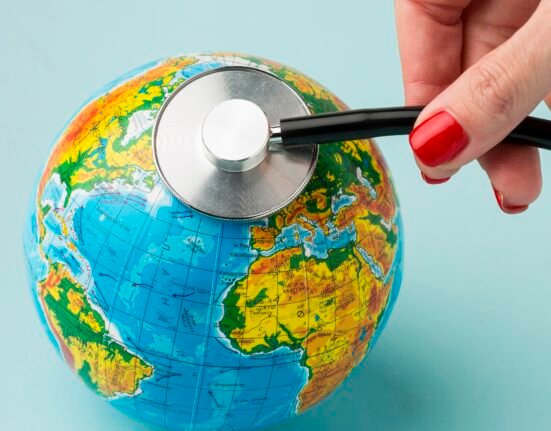In the delicate web of life on Earth, climate is the silent conductor orchestrating the rhythms of ecosystems, weather patterns, and even the invisible journeys of viruses and bacteria. As the planet’s thermometer inches upward, the ripple effects extend far beyond melting ice caps and rising seas—they reshape the very pathways through which diseases travel. From the tropical expansion of mosquito habitats to the shifting seasons that alter migration patterns, climate change is rewriting the map of global health. This evolving narrative calls for a deeper understanding of how warming climates fuel the spread of infectious diseases, challenging humanity to adapt in an era where the environment and epidemiology are more entwined than ever before.
Table of Contents
- The Rising Tide of Climate Change and Its Impact on Infectious Diseases
- Shifting Ecosystems and the Migration of Disease Vectors
- The Role of Extreme Weather Events in Emerging Health Threats
- Unpacking the Socioeconomic Dimensions of Climate-Driven Disease Spread
- Harnessing Technology and Data to Predict and Mitigate Outbreaks
- Policy Pathways for Building Resilient Health Systems in a Changing Climate
- Q&A
- Key Takeaways

The Rising Tide of Climate Change and Its Impact on Infectious Diseases
As global temperatures rise and weather patterns shift unpredictably, the delicate balance of ecosystems is disrupted, leading to the emergence and spread of infectious diseases in regions previously unaffected. Vector-borne illnesses such as malaria, dengue fever, and Lyme disease are invading new territories as mosquitoes and ticks expand their habitats in response to warmer and more humid climates. Moreover, changes in rainfall and flooding can amplify waterborne diseases by contaminating freshwater sources, while drought conditions weaken natural barriers against pathogens. This complex interplay of environmental factors underscores the urgent need for enhanced surveillance and adaptive public health strategies.
- Shifting habitats: Mosquitoes and ticks thrive in warmer temperatures.
- Water quality challenges: Increased flooding spreads cholera and other gastrointestinal diseases.
- Animal migration: Wildlife movements facilitate zoonotic disease transmission.
| Region | Emerging Disease | Climate Factor | Impact |
|---|---|---|---|
| Southeast Asia | Dengue Fever | Increased Rainfall | Urban Outbreaks |
| North America | Lyme Disease | Warmer Winters | Extended Seasons |
| Africa | Malaria | Changing Humidity | Higher Infection Rates |

Shifting Ecosystems and the Migration of Disease Vectors
As global temperatures rise and weather patterns become increasingly unpredictable, habitats once inhospitable to various disease vectors like mosquitoes, ticks, and flies are rapidly evolving. These organisms are migrating into new regions, carrying with them pathogens that threaten to spark outbreaks in populations with little to no prior exposure or immunity. This movement challenges traditional assumptions about disease geography, forcing public health systems to anticipate illness in areas previously deemed low-risk. For example, the expansion of Aedes aegypti mosquitoes has facilitated the spread of dengue and Zika viruses into temperate zones, while tick species have climbed to higher altitudes, bringing Lyme disease into mountain communities.
- Altered seasonality: Longer warm seasons prolong vector activity periods.
- New breeding sites: Changing precipitation patterns create novel aquatic habitats.
- Human encroachment: Increased interaction with wildlife vectors due to land use changes.
| Vector | Newly Affected Region | Diseases | Impact on Public Health |
|---|---|---|---|
| Aedes aegypti | Southern Europe | Dengue, Zika | Increased vector monitoring & outbreak preparedness |
| Ixodes scapularis (Blacklegged tick) | Canadian provinces | Lyme disease | Enhanced diagnostic training and awareness campaigns |
| Anopheles mosquitoes | Highland Africa | Malaria | Adaptation of control measures to new altitude ranges |

The Role of Extreme Weather Events in Emerging Health Threats
Extreme weather events such as hurricanes, floods, and heatwaves are no longer isolated disasters but significant catalysts altering the landscape of global health. These phenomena create perfect breeding grounds for pathogens and vectors that transmit diseases, pushing illnesses into regions unprepared for their impact. For example, unusually intense rainfall can increase stagnant water, promoting mosquito proliferation and enhancing the spread of diseases like dengue, Zika, and malaria. Meanwhile, droughts weaken community resilience by damaging water supplies and agricultural productivity, indirectly intensifying malnutrition and waterborne illnesses.
Key factors linking extreme weather to health threats include:
- Disrupted sanitation systems: Flooding can overload sewage treatment, spreading contaminants.
- Displacement of populations: Forced migration increases exposure to new pathogens.
- Temperature spikes: Heatwaves exacerbate chronic diseases and heat-related illnesses.
| Extreme Event | Health Impact | Emerging Threat |
|---|---|---|
| Flooding | Water contamination | Cholera outbreaks |
| Heatwaves | Heatstroke, cardiovascular stress | Increased mortality rates |
| Hurricanes | Injury, displacement | Respiratory infections |

Unpacking the Socioeconomic Dimensions of Climate-Driven Disease Spread
Economic instability often exacerbates the vulnerability of communities to climate-sensitive diseases. Populations with limited access to healthcare and sanitation infrastructure face heightened risks as shifting weather patterns promote the spread of pathogens. In particular, rural and impoverished urban areas may lack the resources to implement effective disease-prevention measures, making them hotspots for outbreaks. Unequal resource distribution thus becomes a critical factor in determining who suffers most from the intersection of climate change and disease dynamics.
Social factors such as migration and urbanization further complicate the picture. As people move from affected rural zones to overcrowded cities in search of better opportunities, the risk of disease transmission increases due to high-density living conditions and strained public services. Below is a snapshot of socioeconomic drivers influencing climate-related disease spread:
- Poverty amplifies vulnerability through poor living conditions and limited healthcare.
- Displacement fosters new transmission pathways in unprepared areas.
- Infrastructure gaps hinder timely disease outbreak responses.
- Education levels affect community awareness and preventive behavior.
| Socioeconomic Factor | Impact on Disease Spread |
|---|---|
| Income Level | Controls access to healthcare and nutritious food, reducing resistance. |
| Population Density | Facilitates rapid transmission in overcrowded environments. |
| Migration Patterns | Introduce pathogens into new communities lacking immunity. |
| Education Access | Shapes understanding and adoption of preventive measures. |

Harnessing Technology and Data to Predict and Mitigate Outbreaks
Advancements in technology and the strategic use of big data have revolutionized our ability to foresee and control disease outbreaks accelerated by climate anomalies. Sophisticated algorithms analyze environmental, social, and biological data in real time, allowing scientists to detect patterns that traditional methods might overlook. For example, satellite imaging combined with climate modeling can reveal mosquito breeding hotspots before an outbreak occurs, giving health authorities a crucial window for intervention. The integration of AI-powered platforms also supports rapid genomic sequencing of pathogens, helping to track mutations and predict virulence, which is invaluable in tailoring public health responses.
The deployment of these tools fosters a proactive rather than reactive approach, enabling communities worldwide to adapt swiftly to emerging threats. Key elements in this approach include:
- Predictive Analytics: Utilizing machine learning to forecast disease spread based on climatic conditions.
- Mobile Health Technology: Apps and wearables that monitor symptoms and environmental exposure on a community scale.
- Collaborative Data Sharing: Empowering nations through transparent and timely exchange of epidemiological information.
| Technology | Purpose | Example Application |
|---|---|---|
| Remote Sensing | Environmental Monitoring | Tracking vector habitats via satellite |
| AI & Machine Learning | Data Pattern Recognition | Predicting outbreak hotspots |
| Genomic Sequencing | Pathogen Evolution Tracking | Adapting vaccines to new strains |
| Mobile Health Apps | Community Surveillance | Real-time symptom reporting |

Policy Pathways for Building Resilient Health Systems in a Changing Climate
Addressing the multifaceted challenges posed by climatic shifts requires a holistic approach to health systems reform. Strengthening infrastructure to withstand extreme weather events should be coupled with adaptive capacity-building for healthcare workers. Policies must prioritize early-warning systems that incorporate climate projections to anticipate outbreaks, enabling a proactive rather than reactive response. Moreover, fostering cross-sector collaboration—bridging environmental agencies, public health departments, and community organizations—is crucial in designing resilient frameworks that can evolve alongside changing environmental conditions.
A strategic emphasis on equitable resource allocation ensures that vulnerable populations are not left behind as the climate reshapes disease dynamics. Key policy measures include:
- Integrating climate data into national health surveillance programs
- Expanding telehealth services to maintain care continuity during climate-induced disruptions
- Ensuring supply chain robustness to prevent medication shortages during emergencies
- Promoting research initiatives focused on vector-borne diseases and their climate sensitivities
Implementing these pathways fosters a health system not only reactive to immediate crises but anticipatory in safeguarding public health within an unpredictable climate landscape.
| Policy Focus | Key Action | Expected Impact |
|---|---|---|
| Surveillance Integration | Use climate models for disease prediction | Early detection and containment |
| Healthcare Workforce | Train for climate-related health risks | Improved response capacity |
| Infrastructure Resilience | Upgrade facilities for extreme events | Reduced service disruption |
| Equity & Access | Target support for high-risk communities | Minimized health disparities |
Q&A
Q&A:
Q1: How does climate change influence the spread of diseases worldwide?
A1: Climate change alters temperature, humidity, and weather patterns, creating new environments where disease-carrying organisms—like mosquitoes and ticks—can thrive. Warmer temperatures can expand their habitats into areas previously too cold, increasing the risk of diseases such as malaria, dengue fever, and Lyme disease in new regions.
Q2: Are certain diseases more affected by climate change than others?
A2: Yes. Vector-borne diseases, transmitted by insects or animals, are particularly sensitive to climate shifts. For example, mosquito-borne illnesses like Zika and chikungunya are closely tied to temperature and rainfall patterns. Waterborne diseases, such as cholera, can also spike due to increased flooding and contamination linked to extreme weather events.
Q3: What role do extreme weather events play in disease outbreaks?
A3: Extreme weather—floods, droughts, and storms—can disrupt sanitation and healthcare infrastructure, leading to outbreak conditions. Flooding can contaminate water supplies, promoting waterborne diseases, while drought can reduce access to clean water and increase concentrations of pathogens.
Q4: Can climate change affect the timing and intensity of disease seasons?
A4: Absolutely. Warming trends can extend the active seasons of vectors and pathogens, leading to longer periods of transmission. For instance, a warmer spring and fall might prolong mosquito activity, increasing the window for disease spread.
Q5: How do human factors intersect with climate-driven disease risks?
A5: Human activities like urbanization, deforestation, and global travel amplify disease risks by altering ecosystems and facilitating pathogen movement. Climate change exacerbates these risks by pushing vector habitats closer to human populations and enabling faster disease spread across continents.
Q6: What can societies do to mitigate the impact of climate change on global diseases?
A6: Adaptation strategies include strengthening health systems, improving disease surveillance, investing in vector control, and enhancing infrastructure to withstand extreme weather. Addressing climate change itself, by reducing greenhouse gas emissions, is also crucial to curbing long-term disease risks.
Q7: Is there hope for controlling diseases despite the challenges posed by climate change?
A7: Yes. Advances in technology, data analytics, and global cooperation offer powerful tools to predict, monitor, and respond to disease threats. Awareness and proactive planning can help communities adapt to changing climates while safeguarding public health.
Key Takeaways
As the Earth’s climate continues to shift, the intricate dance between environment and illness becomes ever more complex. Our interconnected world faces challenges that transcend borders, reminding us that the ripple effects of warming temperatures reach far beyond weather patterns. Understanding the ties between climate change and the spread of global diseases is not just a scientific pursuit—it is a vital step toward safeguarding the health of communities everywhere. In navigating this evolving landscape, cooperation, innovation, and vigilance will be our most powerful tools to stem the tide and build a resilient future for all.














Leave feedback about this